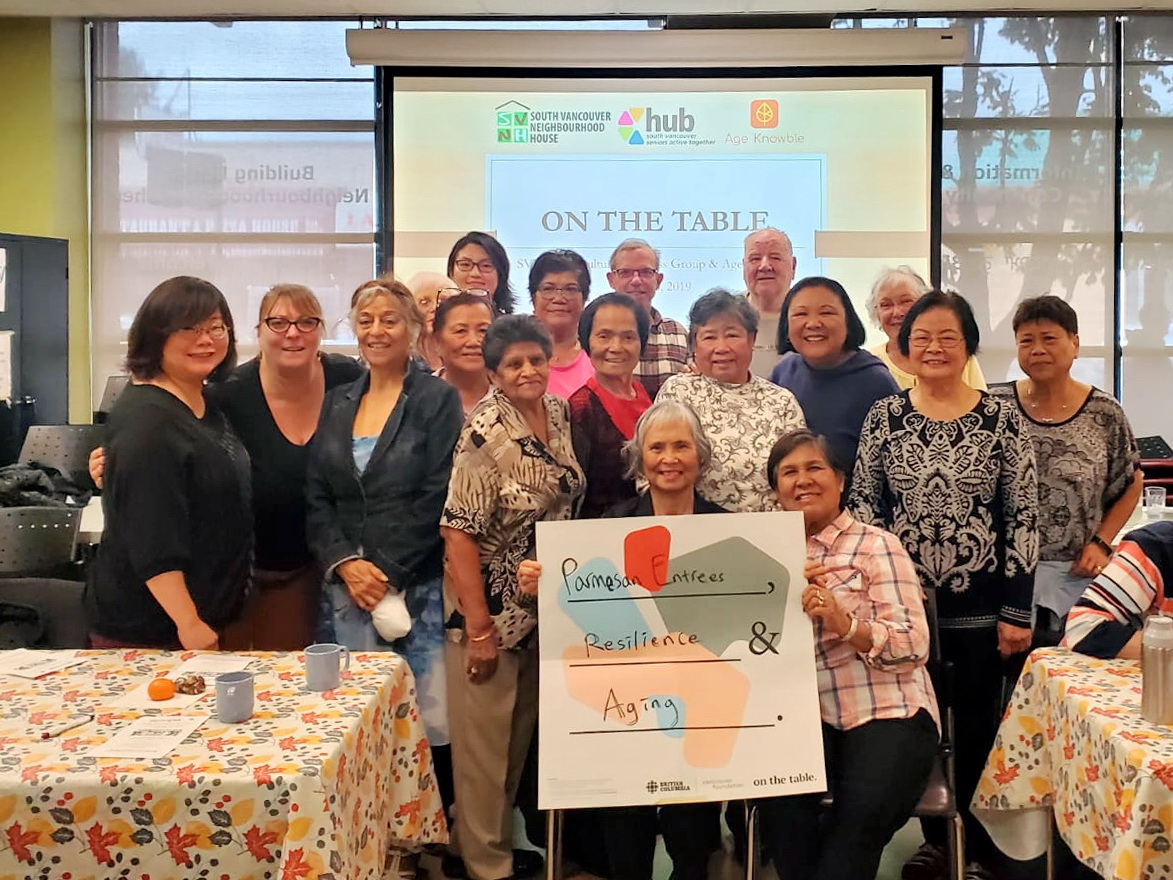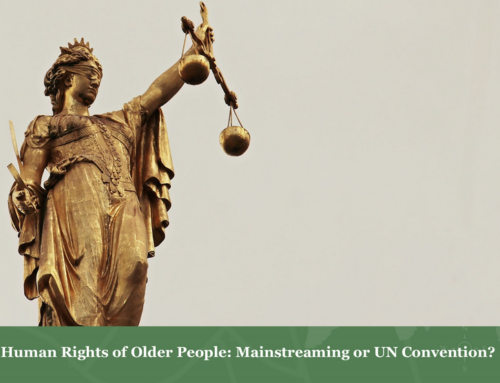We are all experts on resilience. As a toddler, we fall, get back up and take another step. Most of us get at least a few rejections before landing our first job. Parents have to manage the often-baffling demands of their new little person while completely exhausted. But what about older persons? After such a long life, what is left to overcome?
That’s what we tried to find out in October at the Aging and Resilience workshop we gave at the South Vancouver Neighbourhood House. More than 30 older persons came to talk with us about their struggles and their triumphs in old age.
What does resilience look like?
Resilience is different for everyone. Our individual personalities, experiences and environment affect our ability to bounce back from hardship. It also determines what we perceive as difficult. At the workshop, the participants explored what resilience means to them.
We came up with:
- planning ahead for possible obstacles
- facing the unknown with courage
- using emotional strength to face a problem
- using our abilities, physical or otherwise, to solve a problem
- writing down thoughts and feelings and being open to sharing them
- asking for help when needed
Participants identified faith, family and friends (3Fs) as the main drivers of their resilience. While planning ahead and being proactive is helpful, sometimes things still go sideways. When that happens, communication and staying connected is key. Knowing our own emotional and physical strength means we know what kind of help to ask for. Having others to confide in makes the situation less scary and gives us more resources to solve the problem. Communication and staying connected is the key!
What does resilience in older age look like?
All the participants agreed that resilience in old age looks a lot different than it did when they were younger. The younger person’s tendency to believe that anything is possible, means they solve often problems by jumping in the car and getting it done. Participants pointed out that older persons need a little longer, not just because getting around take longer, but because:
- we have earned the right to take our time and consider own happiness first;
- there is more to weigh through before making a decision – health, family, finances;
- our physical or cognitive abilities may not allow us to “just do it”;
- everything is a bigger issue because any potential harm takes longer to recover;
- we might be set in our ways, less flexible and thus, need more time.
Caution doesn’t mean older persons are not resilient. It’s just a different game. Although they are less physically able, older persons have the advantage of a life-time of experience and self-knowledge. “Forewarned is forearmed” as one participant said.
The others went on to say that these factors mean they can focus on what is important to them and make decisions that suits them best. It isn’t about bouncing back to the originally starting point. It’s about adapting and finding that new equilibrium that works for them and their situation.
How is one resilient in face of later life changes and transitions?
Old age brings some big life changes – physical illness, losing a spouse, children moving away, stopping work and declining mental ability. We spent some time in the workshop discussing how to stay resilient in faces of some of these changes.
With energy, earnest passion, and kindness, the participants discussed:
- taking control of situation even though it is challenging or seems impossible
- building a strong 3Fs foundation for emotional support and help
- planning ahead and building physical, social and emotional resilience
Throughout the discussion the participants demonstrated real resilience as supported one another with laughter and tears through some tough conversations.
Final Thoughts
The older persons who participated in the workshop are part of the Intercultural Wellness Group at South Vancouver Neighbourhood House, which means they want to be well. This program offers exercise, group activities and social time. Participants find friendship, fitness and support. They come on their own or with the help of handydart, a transportation service for people with physical or cognitive difficulties.
In the time we spent together we spent together at the workshop, I observed resiliency-building at the individual, community and societal level. And it was encouraging to find that a community agency and the government are supporting older persons in building resiliency.
Making real progress this area, however, is a much larger project. Societal attitudes towards aging, available support networks, care delivery systems, accessible public spaces and age-inclusive policies all affect an older person’s ability to bounce back from difficult situations.
This is why the United Nations has dedicated the first day of October to be International Older Persons day. It’s an opportunity to celebrate the contributions of the older persons and raise awareness on the opportunities and challenges related to aging. Check out the 2019 theme and consider how you can help to make a difference!






